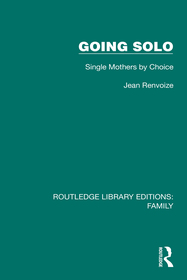
Imperial Museum Dynasties in Europe
Papal Ethnographic Collections and Material Culture
Series: People, Cultures and Societies: Exploring and Documenting Diversities;
- Publisher's listprice EUR 128.39
-
53 249 Ft (50 714 Ft + 5% VAT)
The price is estimated because at the time of ordering we do not know what conversion rates will apply to HUF / product currency when the book arrives. In case HUF is weaker, the price increases slightly, in case HUF is stronger, the price goes lower slightly.
- Discount 20% (cc. 10 650 Ft off)
- Discounted price 42 600 Ft (40 571 Ft + 5% VAT)
Subcribe now and take benefit of a favourable price.
Subscribe
53 249 Ft

Availability
printed on demand
Why don't you give exact delivery time?
Delivery time is estimated on our previous experiences. We give estimations only, because we order from outside Hungary, and the delivery time mainly depends on how quickly the publisher supplies the book. Faster or slower deliveries both happen, but we do our best to supply as quickly as possible.
Product details:
- Edition number 2023
- Publisher Springer Nature Singapore
- Date of Publication 14 September 2024
- Number of Volumes 1 pieces, Book
- ISBN 9789819931910
- Binding Paperback
- See also 9789819931880
- No. of pages145 pages
- Size 235x155 mm
- Language English
- Illustrations XXXVII, 145 p. 31 illus., 7 illus. in color. Illustrations, black & white 595
Categories
Long description:
This book reveals the history of the Vatican’s ethnographic collections by exploring the imperial, scientific, technological, and religious agendas behind its collecting and curating practices in the early twentieth century. It focuses on two principal contributors: the academic, priest, and ‘Pope’s Curator’, Father Wilhelm Schmidt, SVD, and the missionary and linguist, Father Franz Kirschbaum, SVD. Their narratives are embedded in a unique set of comparisons between the ‘liberal humanist ideals’ that underpinned the 1851 Great Exhibition, mid-nineteenth-century German museology, and the 1925 Pontifical Missionary Exhibition. It relates to the period of high colonialism and rampant missionary activity worldwide. It unravels the complicated political and ideological stance taken by the Catholic Church and its place within the science/religion debates of its time. Establishing an essential link between the secular and catholic practices of collecting and curating ethnographic objectsfrom non-Western traditions, the author proposes a broader framework for post-colonial approaches to scholarly studies of ethnographic collections, including those of the Catholic Church. This book appeals to students and scholars of anthropology, museum studies, history, art history, religion, politics, and cultural studies.
Table of Contents:
The Ethnographic Exhibit as a Showcase of Liberal Humanism in Nineteenth-Century Europe.- The Making of the Vatican’s ‘Modern’ Museum Dynasty: The Ethnology of Fr. Wilhelm Schmidt SVD.- Old and New Dynastic Orders: German Anthropology in the era of Bismarck.- Dynastic Networks: The Collision of Christianity and Colonialism in New Guinea.- Fr. Franz Kirschbaum's Contribution to Collecting in New Guinea.- Material Culture Crossing Empires: Notes, Queries and Letters.- The Pontifical Missionary Exhibition (1925): The Last Great Nineteenth-Century Exhibition.- Empires End and Ominous Beginnings-: The Missionary and Ethnological Museum (1927) and the Lateran Treaty (1929).
More





